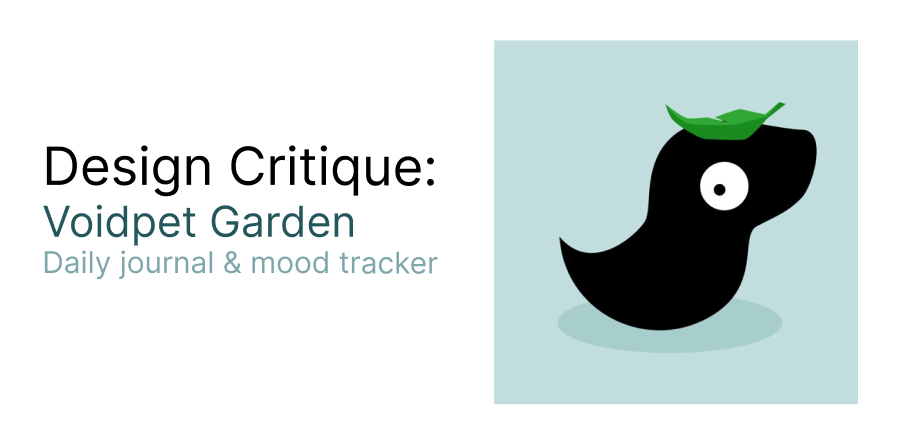Voidpet Garden is a mental health journal app that helps guide users through their emotions, where they exist as magical creatures in an ever-evolving garden. The app’s journal prompts are inspired by Cognitive Behavioral Therapy (CBT), Dialectical Behavioral Therapy (DBT), and personalized recommendations from practicing therapists. This critique will be examining both positive and negative aspects of the app’s features through the lens of the concepts from The Design of Everyday Things by Don Norman and How Artifacts Afford by Jenny L Davis.
Registration
Upon initial registration, the app walks you through a series of steps one screen at a time. One of the first tasks is to name your starter Voidpet. The user is prompted to select from three primary emotions as their starter- Sad, Anger, or Anxious. Each emotion corresponds to a unique Voidpet, which helps the user form a conceptual model that embodies that emotion.
Norman states that “the designer’s conceptual model is the designer’s conception of the product,” and “the user’s conceptual model comes from the system image, through interaction with the product, reading, searching for online information, and from whatever manuals are provided.”
In my own interaction of the product, the user model and design model align similarly through the system image. It was clearly communicated through text and imagery that each Voidpet is to represent an emotional state, which is then personified by giving it a name, allowing for a fun way for users to explore their mental health and grow on an emotional level along with growing their Voidpet.

Growing Your Garden with Plants
As the user progresses through various tasks and activities, they gain different rewards such as experience points and “void matter,” which serves as primary in-game currency. Players can earn such prizes through befriending new Voidpets and making new journal entries.
Once the user has accumulated enough prizes, they can be used in various ways. One such way is to purchase plants to grow your oasis in order to make it more hospitable and to attract new species of Voidpets. The app suggests that the plant should then be nourished at least once a day, similarly to how we should nourish ourselves each day in order to properly care for our mental wellbeing. The player is instructed to tap and hold to make it rain and help the sprout grow.
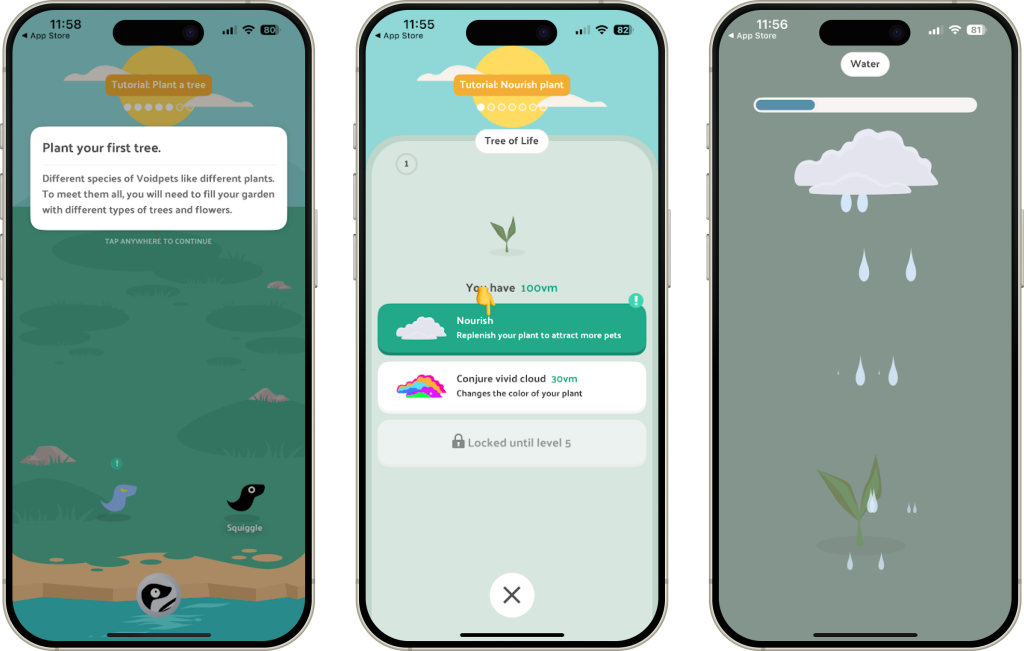
However, if the player is not aiming properly, I found that they are not given proper feedback that they are missing the plant. To make the game more interactive, the experience could be improved by providing proper signifiers and visual affordances to show how much water the plant still needs. I suggest an improvement by having the progress bar halt its progress and change colors when the user is missing the target area, along with an error message. This visual cue could provide visual feedback for the player to adjust their aim. Perhaps even having the phone buzz would alert the user in a helpful way.
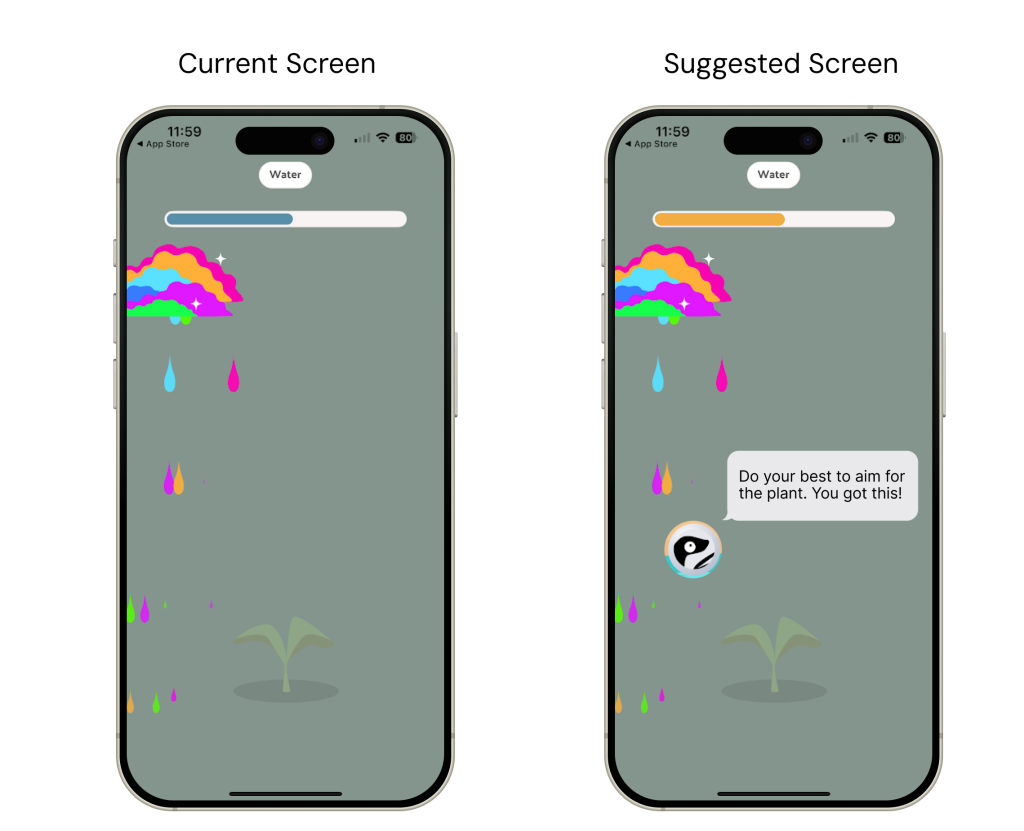
Self Care Kit
Voidpet Garden has a feature where the user can focus on self-care. The kit offers exercises based on therapeutic practices and fosters the players’ emotional stability while simultaneously contributing to the Voidpet’s evolution. In my own case, I wanted to address my negative thoughts and challenge cognitive distortions. The app then allowed me to choose from a specific list of negative thoughts that I was potentially experiencing. Upon selection, the app had me write down what thoughts I was having and encouraged me to reframe the thought without the distortions.
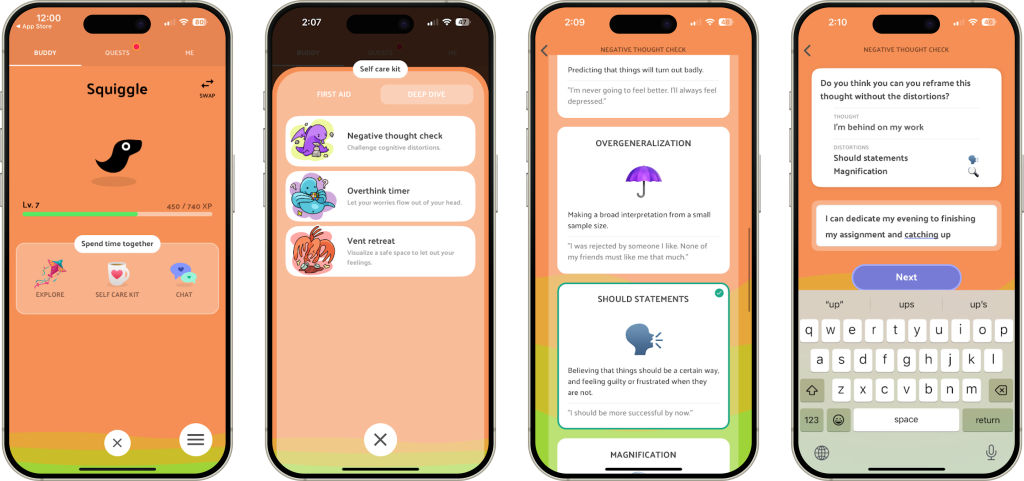
This connected back to one of the steps I completed during the onboarding process, which asked me what challenges I wanted to overcome specifically.
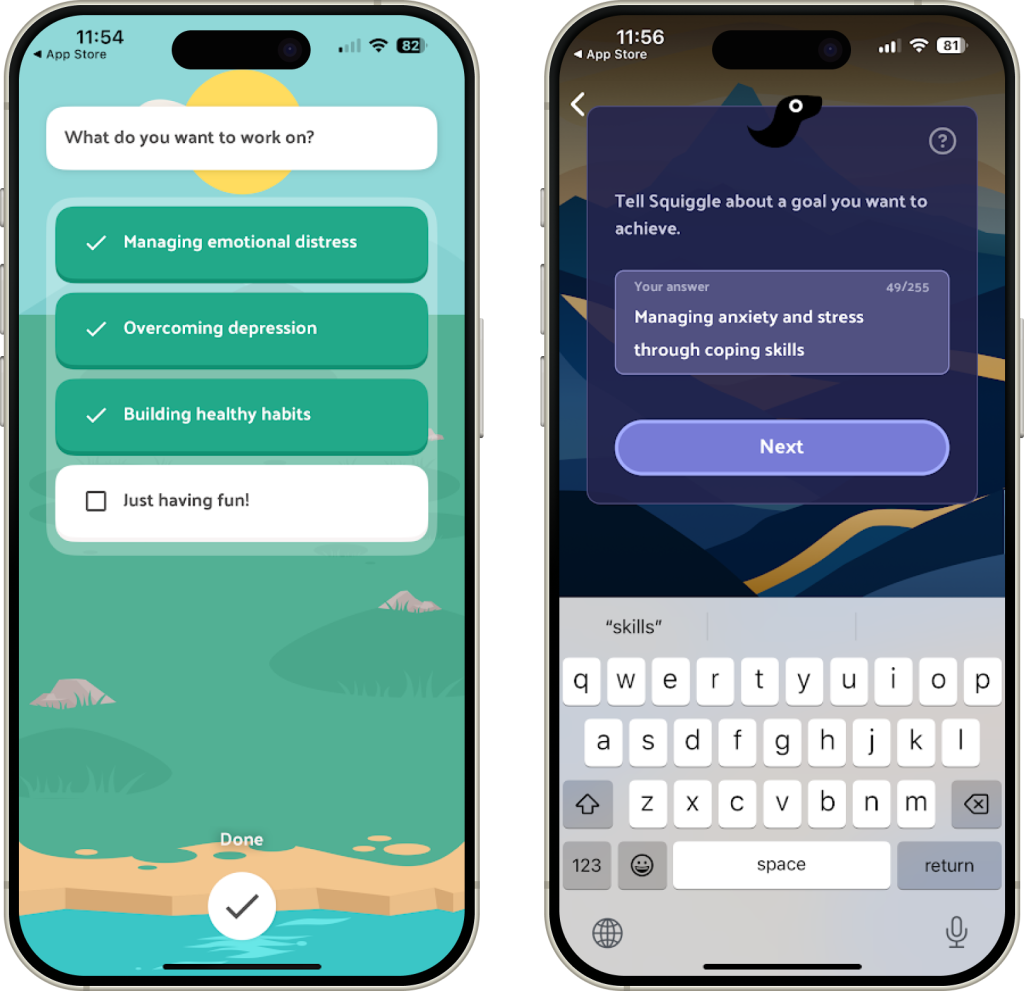
In his book, Norman outlines a cognitive model for how people take action – The Seven Stages of Action:
- Goal (form the goal)
- Plan (the action)
- Specify (the action sequence)
- Perform (the action sequence)
- Perceive (the state of the world)
- Interpret (the perception)
- Compare (the outcome with the goal)
The self-care kit has the user form a goal and specifies how to take action for it, perform it through exercise, and actively perceive, interpret, and compare the outcome.
Quests
In her book, How Artifacts Afford, Davis expands on Norman’s concept of affordance by asking the question “how do artifacts afford?” and uses the framework that “technological objects do not just afford or not afford but request, demand, encourage, discourage, refuse, and allow.”
Within the world of Voidpet garden, the player is kept consistently engaged by completing various quests. At the bottom corner of the app, there will be a Voidpet with a bright red dot on it and it trembles endlessly, demanding attention. Upon clicking the Voidpet, the user can view their quests. In order to continue progressing, the user may be encouraged to make a purchase from the game’s shop.

Conclusion
Voidpet Garden effectively integrates mental health journaling with interactive game play, creating an engaging and accessible user experience. By leveraging clear conceptual models and feedback systems, the app supports emotional reflection and growth. However, certain design elements, such as insufficient feedback when plant watering, could be refined to enhance usability. Overall, the app demonstrates thoughtful design but would benefit from improvements in its affordances and feedback mechanisms.
